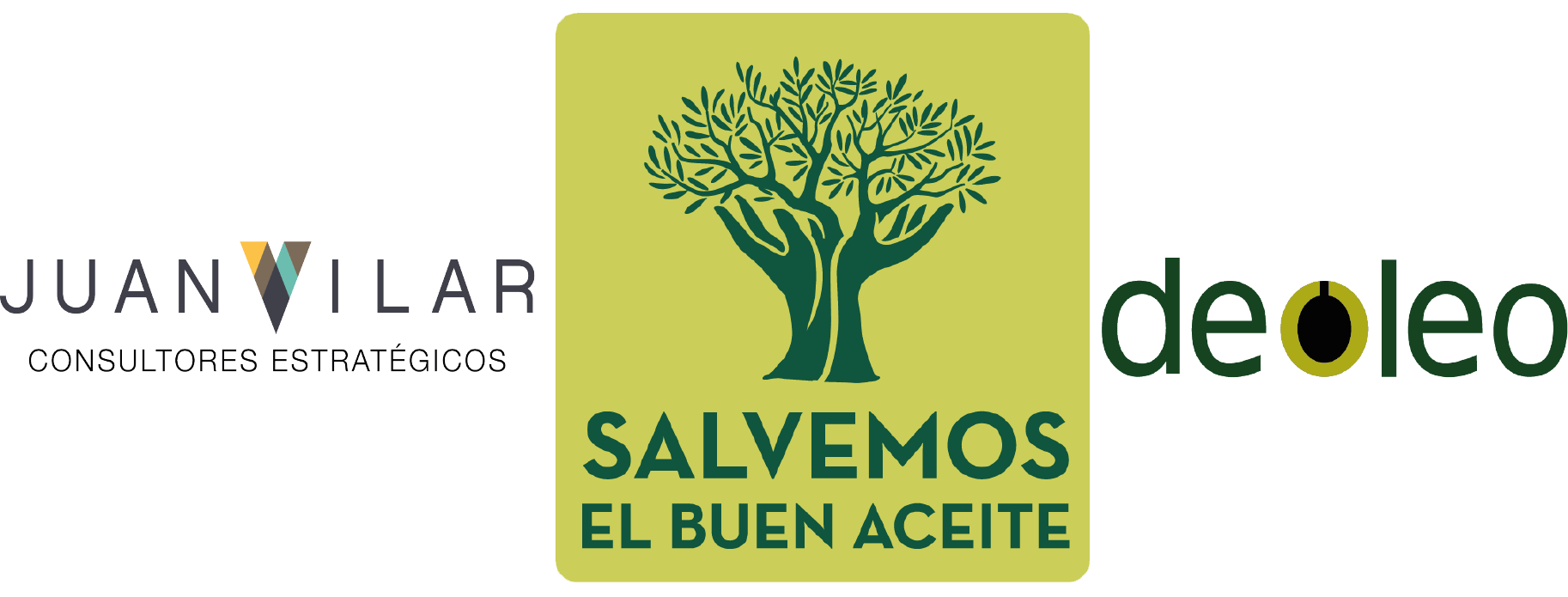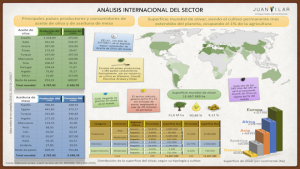The sustainability of Spanish olive oil requires initiatives (by all the agents involved in the value chain) based on traceability, higher quality standards, the differentiation of varieties, the promotion of consumption and consumer education; giving priority to the generation of value over the volume of production, as well as providing continuous investment for the training of small farmers in efficient and sustainable practices, as well as for the awareness of the whole chain and the knowledge of the consumer.
In Spain, Traditional Non-Mechanizable Olive Trees (OTNM) occupy 500 thousand hectares. That amounts to more than 20% of the total olive groves in our country and 200 thousand small holdings (between 1 and 3 hectares each) of about 300 thousand families in Andalusia, Castilla-La Mancha, C. Valenciana, Catalonia and Aragon, which could disappear in the next 10 years. This is the main conclusion of the Salvemos el buen aceite report, produced by the international oil analyst Juan Vilar and commissioned by Deoleo, a Spanish multinational food company who is a world leader in olive oil marketing.
Spain is the largest producer and exporter of olive oil in the world, with a total of 2,7 million hectares of olive groves, more than 90% for oil production. Its productivity is the highest of the 64 producing countries (between 544 kg. of oil per hectare in traditional olive groves and 720 kg. in hedge efficiency), in 575 thousand olive groves with an average production of 1,3 million tons of olive oil (70 % extra virgin or virgin quality). In the current year, olive oil exports are estimated at more than 3 billion euros, 15% of total domestic agricultural food exports, just behind those of cereals and vegetables. The sector accounts for 0,6 % of national GDP, and gives direct employment to more than 220,000 people. (almost 1 % of the working population and 29 % of agricultural workers). If we include indirect employment, the figures amount to 1,3 million jobs (5,7 % of the working population).
In the last 6 years, international olive growing has been expanding, with more than 11,6 million hectares of olive groves distributed in 64 producing countries, led by Spain, Italy and Greece. Over the past 15 years, 46 to 64 producer countries have been planted, 1,65 million hectares (10 new olive trees per second) planted and 34% increased world production. The potential productive capacity of the world’s olive groves has increased to almost 5 million tons of olive oil per year.
Moreover, there has been a drop in consumption of more than 5 percentage points accumulated in the last 9 campaigns and, according to data of the International Olive Council (IOC) and Juan Vilar himself, has amounted to almost 3 million tons. In Spain, the world’s leading producer and consumer of olive oil, consumption is also falling. Growth in the category Extra Virgin (AOVE) does not compensate for the general decline.
Therefore, and as can be seen from the report drawn up by Juan Vilar for Deoleo, the sustainability of the Spanish olive grove, especially the NMOO, which is characteristic of our country, is in serious danger. This is mainly due to the growing gap between production and consumption in Spain and throughout the world.
However, according to Juan Vilar, «it is possible, and necessary, to reverse this situation. It takes the commitment of all the actors in the sector to maintain a type of olive grove which has an important social, economic and environmental role, which is typically Spanish and which, for its uniqueness, brings an enormous richness and variety to the supply of olive oil».
The risk of disappearance affects 20% of Spanish olive groves, a sector focused on volume and aggressiveness in prices, which adds to the drop in consumption. All of this has a greater negative impact on the sustainability of the NTOC, which is characterized by its atomization (240,000 small farms and 300,000 families).
The production costs per Kg of olive oil varies between a wide range determined by the type of crop, ranging from 0,80 € for high density holdings to 2,40 €/Kg on average (sometimes up to 3 €) of traditional farms, in high slopes and non machinable, which places them under the threshold of profitability.
As a consequence, together with the decrease in consumption and the decrease of the prices at source, more than 130 thousand hectares of this type of olive grove, unique and very characteristic of Spain are already being abandoned. These are ones that uses native varietals, adapted to their climates and soils, with a differential organoleptic profile and exclusive properties of olive oils that otherwise would not exist. NATO also provides environmental benefits such as CO2 absorption (1 million tons per day), reduction of soil erosion and desertification, as well as maintenance of the animal ecosystem. Another of the clear effects of these olive groves is the maintenance of employment and therefore the brake on rural depopulation, in areas with climates and orographies where other crops cannot prosper.
As Juan Vilar proposes, strategically there are different effective alternatives that solve this situation. Firstly, it is necessary for demand to absorb the growing supply through policies of government institutions or not, of a macro nature, that establish an adequate consumption environment, where all olive groves, whatever they are like, are economically profitable. After this, traditional olive groves must promote strategies of differentiation and singling out, and promote that the user acquires its singular product and added value, for a higher price guaranteeing a higher net income to the olive grower at source. Clear examples of such strategies are organic olive growing, biogenerative olive growing, biodynamic olive growing, heroic olive growing, singular oils, etc.; which are being executed in origin and the consumer must know in order to be able to value it properly. It is also important to optimize costs, although these have a mandatory optimization limit in this case.
Summary of the report (in Spanish) – PDF


